
- Topics 1523
- Industrial 59
- Troubleshooting Guides 31
- Restaurant Management 138
- Bar Management 66
- Catering Tips 38
- Bakery Management 47
- Food Trucks & Concessions 50
- Advertising & Marketing 40
- Eco-Friendly Tips 12
- Facility Layout & Design 49
- Coffee Shop Tips 32
- Installation & Maintenance 59
- Janitorial & Pest Control 33
- Safety & Sanitation 108
- Startup Tips 112
- Menu Design 11
- Kitchen & Cooking Tips 103
- Hospitality Management 25
- Pizza & Sandwich Shop Tips 31
- Smallwares 40
- Food Prep 99
- Tabletop Items 19
- Disposables 26
- Calculators & Tools 8
- Consumables 69
- Warewashing & Laundry 20
- Cooking Equipment 101
- Food Storage & Refrigeration 53
- Beverage Equipment 39
- Office Supplies 5
Whether sweet or dry, white or red, robust or light, wine requires precise serving procedures to reach its full flavor potential. Mastering the art of serving and pouring wine and holding the glass correctly creates a positive experience for wine enthusiasts and first-time wine tasters alike. In addition to proper serving temperatures, each type of wine requires a specific style of glass for service to best enhance the aromas, flavors, and overall experience of the wine. To best enjoy your wine collection, browse through the links below to choose the ideal wine glass for your needs.
Shop All Wine Glasses
Use the following links to learn more about different types of wine glasses:
| Red Wine Glasses | White Wine Glasses | ||
| Dessert Wine Glasses | Sparkling Wine Glasses | Rose Glasses | All-Purpose Glasses |
Types of Wine Glasses
Though there are different types of red wine glasses, they have a few distinct features designed to enhance the taste of the wine. Red wine glasses are large with full, round bowls and big openings, which enable you to enjoy the aroma of the wine. The full-styled bowl provides air contact across the surface of the wine to draw out its complex aromas and flavors. Additionally, this design increases the oxidation rate, which smooths out the unique tastes of red wines.
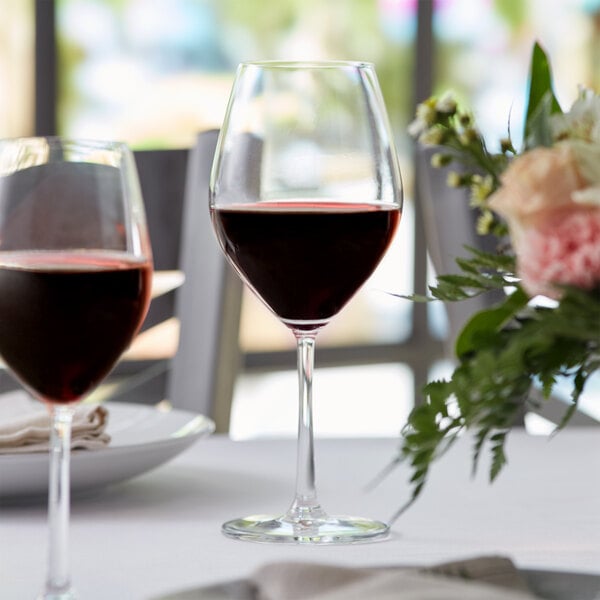
A Bordeaux glass is the tallest red wine glass with a long stem and a broad bowl, though not as wide as other red wine glasses. Creating distance between the wine and the mouth, the height of the glass enables ethanol to dissipate on the nose. This characteristic also allows more oxygen to soften tannins, which contributes to red wine’s characteristic bitterness. Furthermore, the design of a Bordeaux glass directs wine to the back of the mouth, minimizing tartness and maximizing the flavor spectrum.
Type of wine: full-bodied, heavier red wines with high tannins
- Bordeaux blends
- Petite Sirah
- Cabernet sauvignon, cabernet franc
- Malbec

Similar to a Burgundy glass, a pinot noir glass is characterized by its wide bowl. This enables the wine to interact with the air unhindered, improving the flavor and aroma of the wine. Like Burgundy glasses, the thin rim makes the wine easy to sample and drink.
Type of wine: light red wines
- Pinot noir
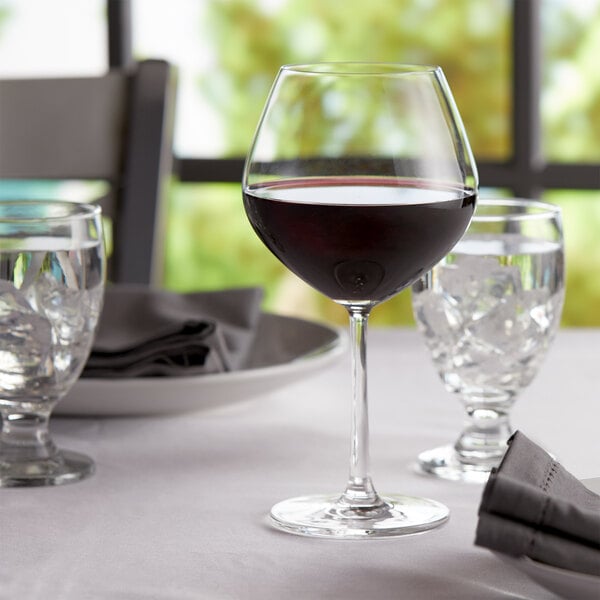
A Burgundy wine glass has a large bowl, broader than the Bordeaux glass, with a narrow top. This design directs wine to the tip of the tongue, allowing the drinker to detect flavor nuances. The thin rim makes sipping easy, and the broad bowl encourages the aromas of delicate wines to accumulate.
Type of wine: lighter, more delicate red wines
- Beaujolais
- Red Burgundy
- Dolcetto
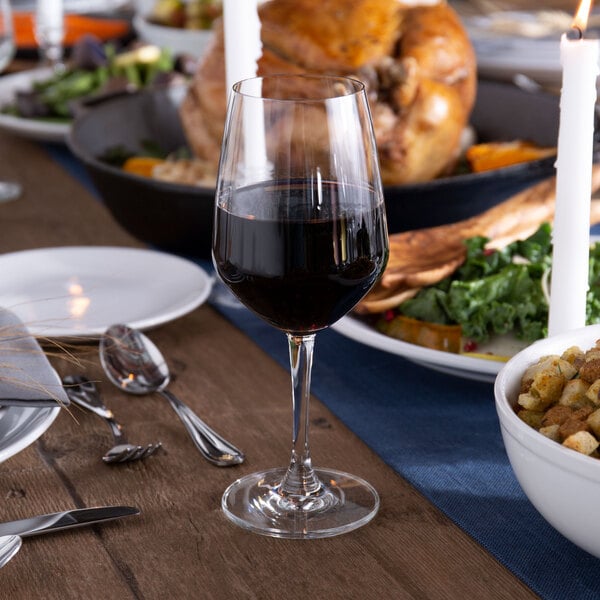
Cabernet Sauvignon Glass
The cabernet sauvignon glass is also tall, though it’s not as tall as a Bordeaux glass. It has a broad bowl, which enables the wine to breathe. While the rim thickness varies, the narrow mouth accumulates the aroma of the wine and enhances its smell.
Type of wine: bold red wines
- Cabernet sauvignon
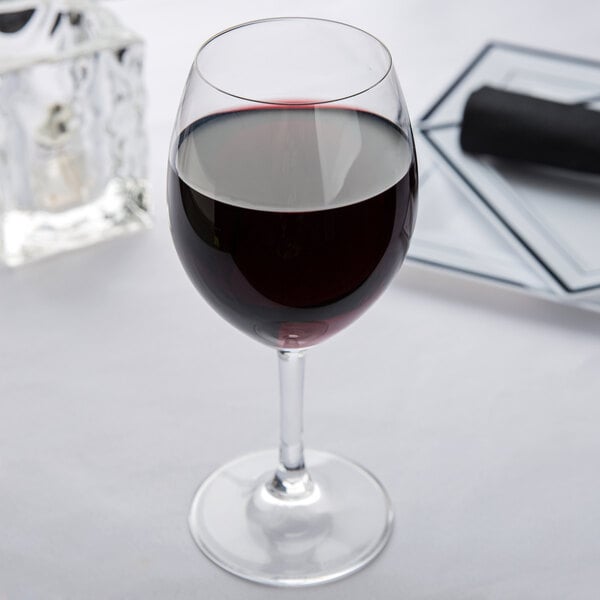
Standard Red Wine Glasses
When in doubt, choosing a standard red wine glass will enhance the taste of whatever red wine you favor. Due to the small opening, the flavors of the wine meet the tongue in a continuous flow rather than all at once. This distinctive design softens the spiciness and rich flavors of red wines.
Type of wine: medium- to full-bodied red wines with or without spicy components
- Zinfandel
- Shiraz
- Carignan
- Merlot
- Chianti
Unlike other wine glasses, white wine glasses have a design that focuses more on preserving the wine's aromas than allowing the wine to breathe. The bowl is slightly smaller, more U-shaped, and upright than a red wine glass. In addition to enhancing the wine's aroma, the glass shape also maintains the cool temperatures of the wine. This is done by giving white wine glasses longer stems to keep the warmth of your hand from diminishing the cooler wine temperature.

Chardonnay Wine Glass
A chardonnay wine glass has a larger opening, which guides the wine to the tip and sides of the tongue. This enables the palate to detect the sweetness of the wine. Ultimately, this wine glass balances the aroma and taste well. The bowl provides just enough aeration to concentrate the aroma while the larger opening balances out the sweetness and acidity of the palate.
Type of wine: full-bodied wines
- Chardonnay
- Semillon
- Viognier
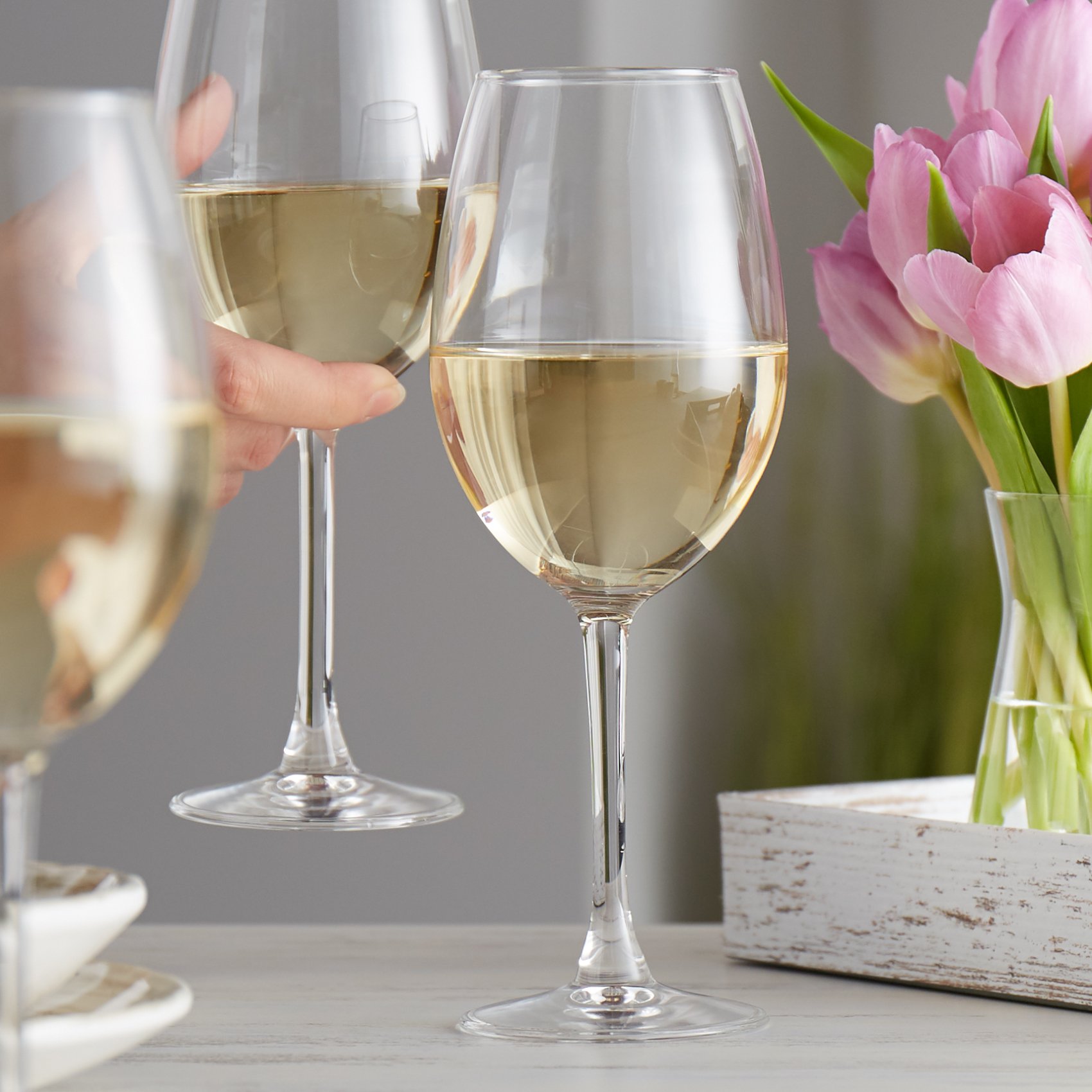
Sauvignon Blanc Glass
Ideal for fruity and floral white wines, a sauvignon blanc glass is tall with a slender bowl. These features capture the nuanced, delicate floral and fruit aromas of the wine, guiding the aromas straight to the nose. Since the sides of the mouth detect acidity the most, a sauvignon blanc glass causes the tongue to form a U-shape and directs the wine down the front of the palate towards the center. This results in a smoother sip as tasters savor the flavor of the wine.
Type of wine: light- to medium-bodied, fruity, or floral wines
- Sauvignon blanc
- White Bordeaux
- Fume blanc
- Loire
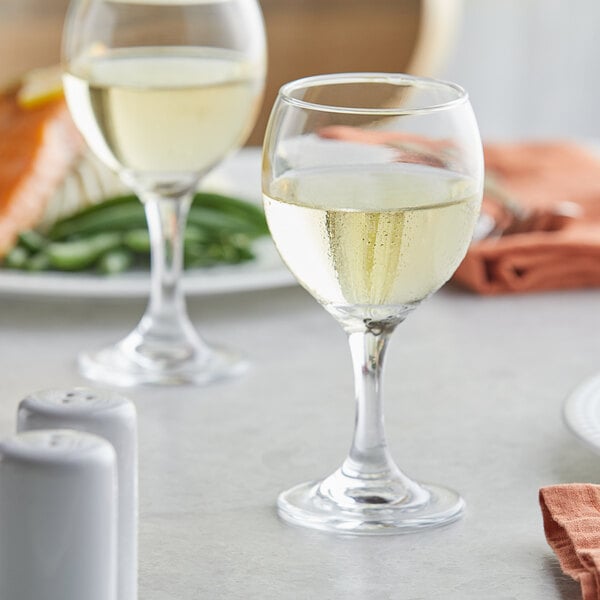
Montrachet Glass
The Montrachet glass is designed to hold complex white wines and its design reflects that intent. Its large bowl allows the heavy intricacies of the wine to interact with sufficient air and open up the flavors. The glass also has a large opening, enabling the drinker to smell the complex aromas of the wine. Additionally, this opening allows the wine to flow from the edges of the tongue to either side of the palate, encouraging the taste of both sour and acidic flavors.
Type of wine: white wines with complex notes
- Montrachet
- White Burgundy
- Corton-Charlemagne
- Meursault
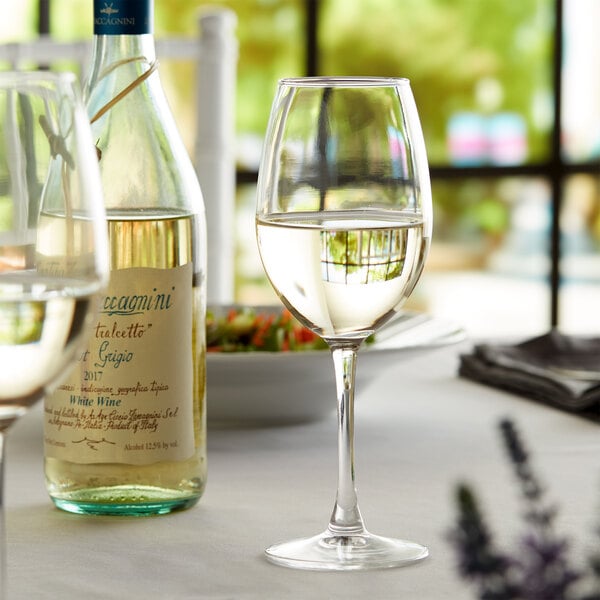
Riesling Glass
As the smallest glass of the white wine glass styles, the riesling glass has a small, rounded bowl that narrows towards the rim. The rim, also smaller than most wine glasses, guides the wine towards the center and the back of the mouth to prevent the wine’s sweetness from overwhelming the drinker.
Type of wine: sweet varieties of wine
- Riesling
- Zinfandel
- Sauvignon blanc
- Gruner Veltliner
Serving dessert wine in dessert wine glasses brings out the sweetness of the wine's taste and aromas. Typically, dessert wine glasses are smaller to accommodate the smaller pours due to the high alcohol content of this type of wine, which is characteristic of after-dinner drinks. The design also directs wine to the tip and back of the mouth to magnify the sweetness of the wine.

Port Wine Glass
A port wine glass has a narrow mouth, which reduces the evaporation of ethanol and concentrates the aromas of the wine at the top of the glass. Though it has the characteristic small shape of dessert wine glasses, it’s still tall enough to allow sufficient swirling of the wine to release the aromas. Designed to lead wine slowly down the center of the mouth, this shape enables the palate to enjoy the wine’s sweetness without being overwhelmed by it.
Type of wine: port or other dessert wines
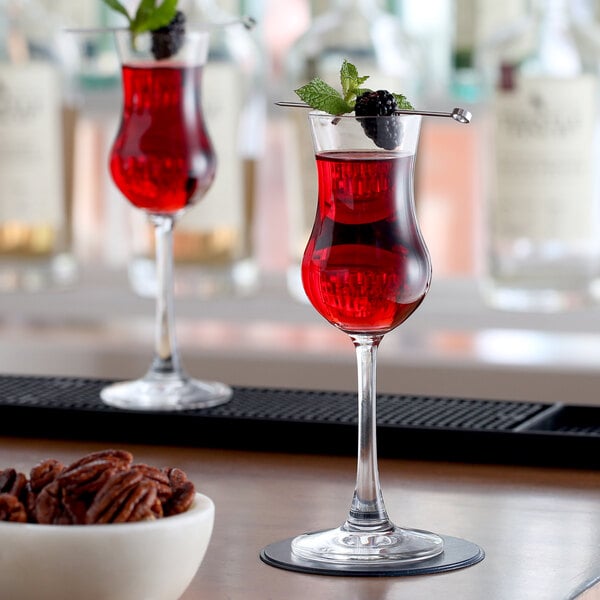
Sherry Wine Glass
Like a port wine glass, a sherry wine glass has a small shape due to the high alcohol content of the wine served in it. The glass’s narrow rim prevents ethanol from escaping the glass while still allowing for easy sipping. With a unique shape, the design of a sherry wine glass directs wine to the back of the mouth so the sweetness doesn’t overwhelm the palate.
Type of wine: sherry, cordial, dessert wines
Rose wine has a unique flavor profile similar to red fruit, flowers, citrus fruits, and melons, and rose wine glasses are designed to draw out those flavors. Many rose wine glasses have a diamond shape with a longer stem and a softer bowl structure, but the lip of the glass is the most important part. The best rose wine glass depends on whether you are drinking a young or mature rose wine, which pair with either the flared lip glass or tapered glass designs.

Flared Lip Rose Glass
A flared lip rose glass tends to work well with young rose wines because the lip draws out the wine’s crisp flavor. The long stem ensures that the drinker’s hand doesn’t warm the wine from its ideal serving temperature. To enhance the sweetness of the wine, the flared lip directs the wine first to the tip of the tongue to focus on the most sensitive taste buds.
Type of wine: young, crisp rose or young white wine
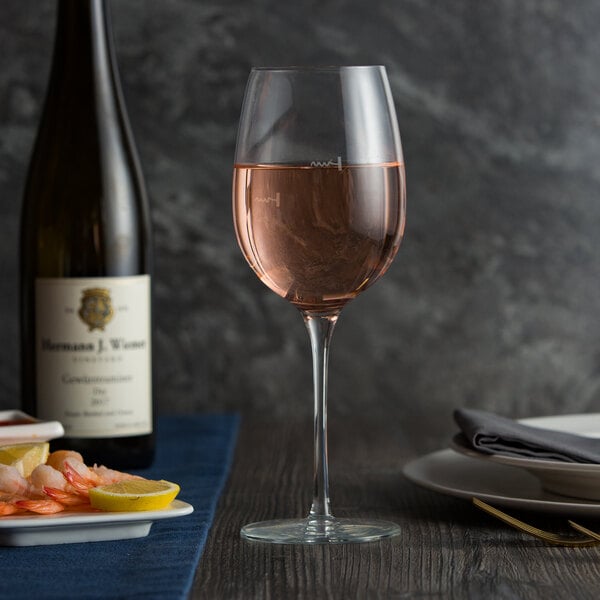
Slight Taper Rose Glass
For mature rose wines, choose a slight taper rose glass. These glasses have a short, wide bowl that’s rounded at the bottom and tapers toward the top. This shape pushes the aroma to the top of the glass, allowing the drinker to savor the full experience of sophisticated wines.
Type of wine: mature, full-bodied rose
We've all seen champagne served in those distinctly shaped tall glasses at elegant parties and events. However, this particular shape plays a vital role in enhancing the flavor of sparkling wine and champagne rather than just functioning for appearance's sake. Typically, sparkling wine glasses have an upright, narrow bowl that works to preserve the carbonation and flavor of the wine, allowing the drinker to enjoy the wine without it going flat.
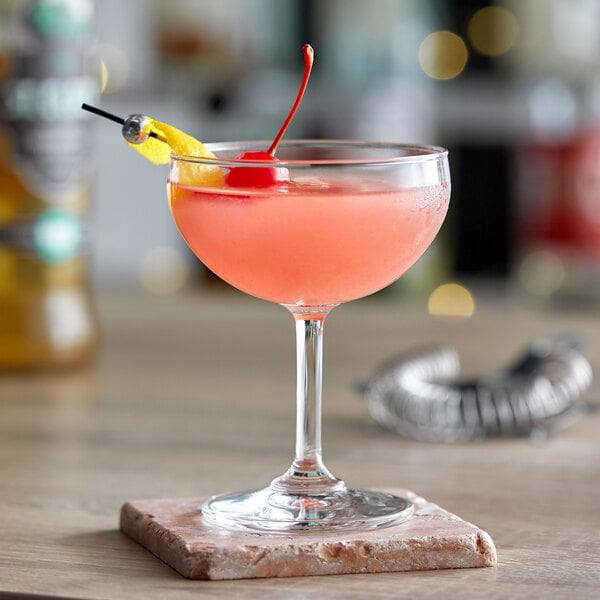
A coupe glass has a very distinct shape with a short, broad, shallow bowl and a stem. Originally popular during the roaring ‘20s, this glass was used to serve bubbly dessert champagne made with a heavy dosage of syrup. The bowl causes the wine to come in contact with air and quickly dissipates bubbles and aromas, making it a less popular choice today. Ideal for themed cocktail parties, a Coupe glass holds a small amount of liquid and allows for portion control.
Type of wine: sparkling wine and cocktails
- Sweet champagne
- Cava, Franciacorta
- Prosecco
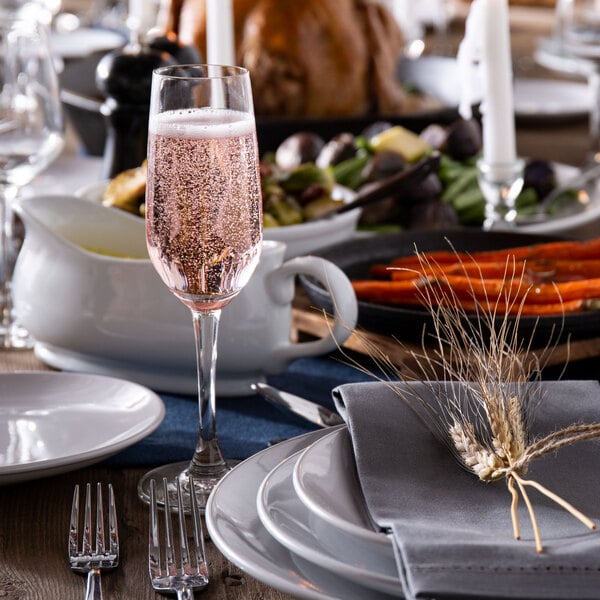
Often associated with champagne, a flute wine glass is ideal for serving sparkling wine or champagne. It has a short-length to medium-length stem with a long, narrow, upright bowl that’s relatively straight. This successfully retains the carbonation and captures the flavor of the wine. Additionally, the bead at the base prompts bubbles to gather and quickly rise for a stunning appearance.
Type of wine: young sparkling wine or champagne
- Cava
- Franciacorta
- Prosecco
- Asti

The tulip wine glass gets its name from the shape of the bowl, which has a slim lower bowl that widens in the middle and narrows toward the opening. The narrow top traps carbonation and keeps champagne and sparkling wine from going flat while also directing aromas toward the tongue instead of the nose. The bead at the base of the glass makes the bubbles rise, while the wideness allows room for flavor complexities to flourish.
Type of wine: young or mature champagne
- Cava
- Franciacorta
- Prosecco
- Asti
If a single glass type is all that your circumstances permit, a set of all-purpose wine glasses is a great solution. Although the experience may not be the same as when you use the proper glass type for the application, these glasses offer a similar function at a lower cost and increased efficiency. You can still enjoy the flavors and aromas of wine without spending extra money on multiple types of wine glasses.

Whether you realize it or not, the stem of a wine glass plays an important role in properly serving certain types of wine. It contributes to the temperature of the wine and helps you invigorate the various aromas of the wine by swirling it. All-purpose wine glasses with a stem have a bowl shape between that of red and white wine glasses with an average length stem beneath it, allowing you to use them for both types of wine.
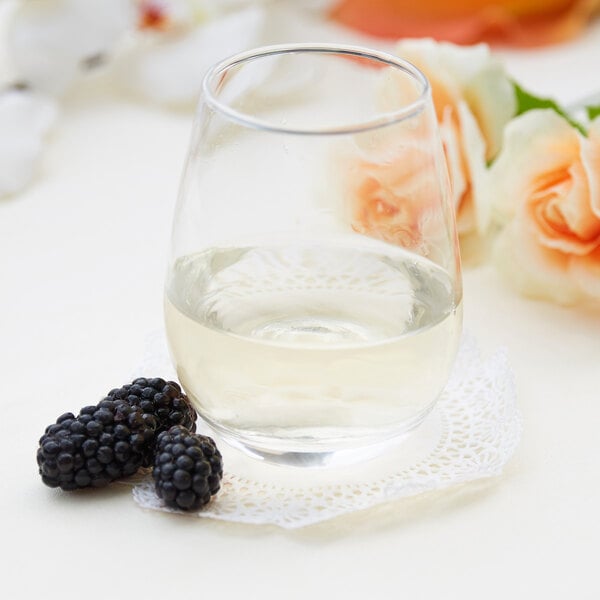
Eliminating the stem, stemless wine glasses forgo elegance for the sake of stability and reliability. They blend well in both informal settings and formal, modern settings. However, one of the biggest appeals of using stemless wine glasses is removing the social anxiety surrounding how to properly hold a traditional wine glass. Stemless wine glasses have the same bowl shapes and styles as stemmed glasses, but the wines served in them may be warmed faster.
What Is the Difference between Glass and Crystal?
All crystal is glass, but not all glass is crystal. In general, the difference in lead content determines whether something is classified as glass or crystal. The presence of lead softens the glass in crystal, making it easier to cut and engrave. Unlike traditional glass, crystal is heavier and diffracts light. In traditional lead glassware, the lead tends to leach out of the crystal. To combat this, today's crystal glassware is typically unleaded.
When deciding between crystal and glass, consider the environment in which the wine glass will be used and your washing situation. You may choose to purchase some of each, so you can use either glass in the correct situation depending on your needs.
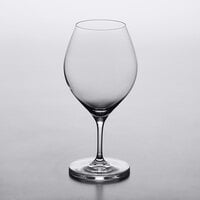

Crystal Wine Glasses
Crystal wine glasses enhance the aromas of wine and offer an elegant design, making them perfect for high-end dining rooms and formal events.
- Can be spun very thin to create a very thin rim
- Yields a smoother drink flow against the tongue because it eliminates the thicker lip edge
- More expensive than glass
- Very fragile and break easily
- Porous and must be washed by hand
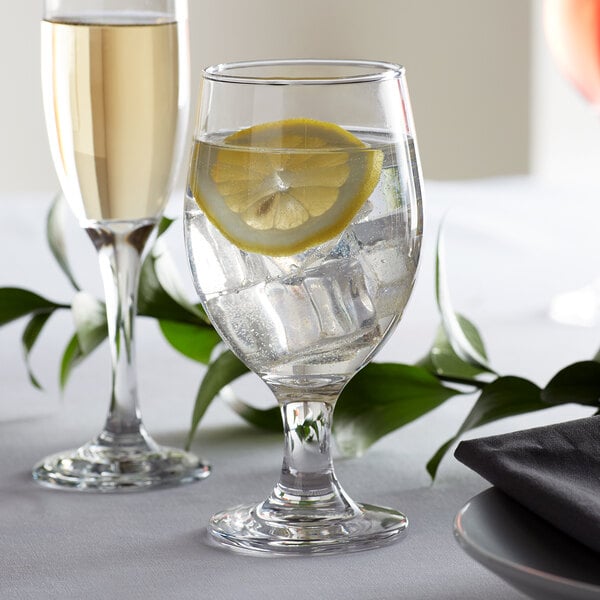

Glass Wine Glasses
Glass wine glasses are more durable than their crystal counterparts, making them a better fit for bustling casual restaurants and bars.
- More durable and less likely to break
- Non-porous and usually dishwasher safe
- Less expensive
- Not as delicate as crystal
- Usually not as well designed as crystal glasses to enhance wine's flavors
Parts of a Wine Glass
While there is a wide range of types of wine glasses, the parts of a wine glass remain the same across almost all styles. A wine glass is composed of four parts - the base, the stem, the bowl, and the rim. Changes to these parts, such as a wide bowl versus a narrow bowl, help enhance the aromas and flavors of the wine and plays a crucial role in properly sampling your wine collection.
- Base: flat, circular piece at the bottom of the glass that provides stability for the glass.
- Stem: the thin piece that elongates the glass while giving the customer something to hold without raising the temperature of the wine. It also prevents fingerprints from getting on the bowl.
- Bowl: contains the pour of wine and is the most important aspect of a wine glass. It should be large enough to comfortably swirl the wine and narrow enough at the top to capture the aromas of the wine. The bowl size varies depending on the type of wine you serve.
- Rim: uppermost part of the glass that directs wine into the mouth. A thinner rim is less distracting for drinkers and a smooth rim encourages a better flow of wine. Thick, round rims are a sign of cheaply made wine glasses.
What Is a Standard Pour of Wine?
A standard pour of wine is around 5 ounces, which gives you about 5 servings in one 750 mL bottle of wine. Some restaurants will pour as much as 6 oz. and some may offer less, depending on the price of the wine. Some glasses have pour lines printed on them for a precise pour every time.
For tastings, a standard pour falls around 2 oz., enough to properly smell and taste the wine without initiating a buzz too quickly. Similarly, dessert wines are usually served in 2 oz. pours since they are much sweeter and higher in alcohol than other types of wines.
The size of the glass also contributes to how much wine is poured at a time. A smaller glass will give the appearance of more wine while a big balloon glass will make even a generous pour look light. Sparkling wine is often served in 5-6 oz. servings, like white or red wine, but it might look like a smaller pour because of the shape of the flute. It's important not to overfill a wine glass, as the extra space in the glass is there intentionally to hold aromas.
To further create a seamless wine experience for your guests, learn how to open a bottle of wine using the proper corkscrew for the job.
Wine Glass Types Chart
Use this chart to understand the different types of wine glasses and print off our types of wine glasses chart so your tasting room staff can use it for easy reference.
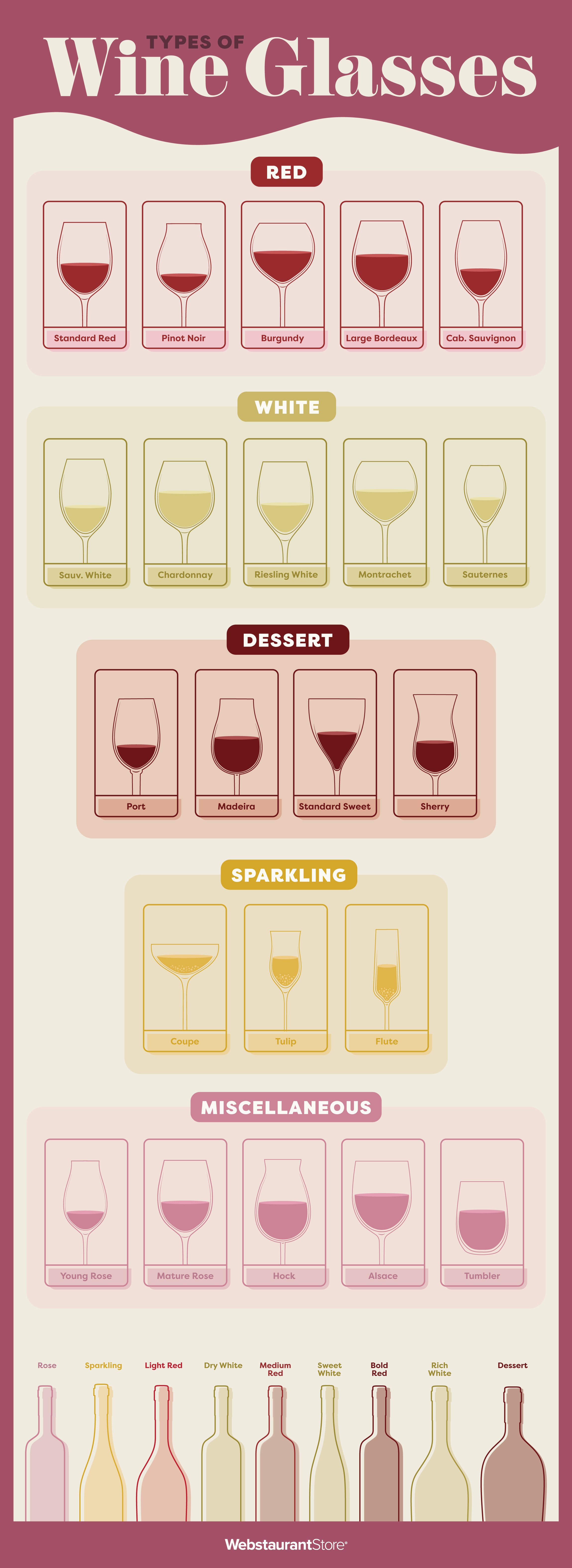
Related Resources

November 2025 WebstaurantStore Coupon Code
The holiday season is almost upon us, making it the perfect time to save on festive supplies. This November, we're offering great deals here at WebstaurantStore! Easily stock up on the supplies you need this holiday season, as our sale items range from festive fall flavoring syrups to porcelain dinnerware for holiday dinners. Check out our selection of sale items below and don't forget to enter the code THANKFUL at checkout to enjoy savings of up to 15%! Looking to save even more? Check out the new Webstaurant Rewards® Visa Business Card ! Sign up for a new card today and start earning rewards on every WebstaurantStore purchase, and save on a WebstaurantPlus subscription. Explore incredible deals on disposable items with November's monthly

Types of Beverageware
Pairing a beverage with the correct glass is a key indicator of your establishment's class. From wine glasses that elevate the aroma of fine wines to specialty glasses designed for specialty cocktails , each type of beverageware serves a specific purpose. This guide will explore the various types of beverageware, including beer, coffee, and cocktail glassware, to help you supply your restaurant according to your needs. Shop All Glassware Use the following links to navigate to a type of beverageware: Wine Glasses Cocktail Glasses Beer Glasses Drinking Glasses Mugs, Cups, and Saucers Dessert Glasses Specialty Glassware Serving Beverageware Beverageware Chart
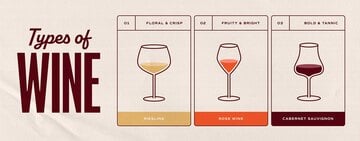
Guide to the Most Popular Types of Wine
You want to create an elegant wine and cheese pairing , but you may not quite understand the difference between a cabernet sauvignon and a sauvignon blanc. Mastering wine knowledge is no easy feat. There are over a thousand wine varieties to choose from, all grown in countless unique wine regions worldwide. To the aspiring wine connoisseur, this is both exciting and overwhelming. The best place to start is by understanding the nuances of the most popular grapes used to make wine. Wine grapes have seeds, are sweeter than table grapes, and are much smaller than what you see in the grocery store. Even the wines you feel most familiar with have an incredible complexity of flavor and vary widely based on their climate, region, and fermentation p


 Burgundy
Burgundy Pinot
Pinot Bordeaux
Bordeaux Cabernet
Cabernet Standard
Standard Sauvignon
Sauvignon Montrachet
Montrachet Chardonnay
Chardonnay Riesling
Riesling Port
Port Sherry
Sherry Vintage
Vintage Tulip
Tulip Flute
Flute Young Rose
Young Rose Stemless
Stemless